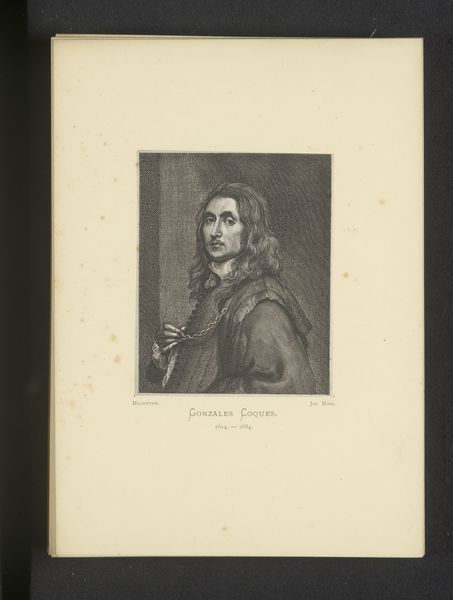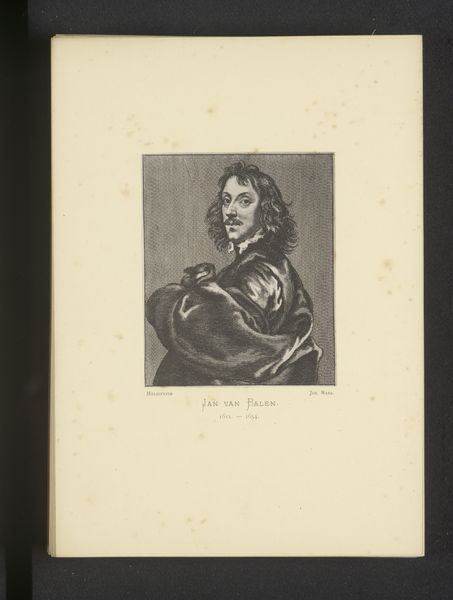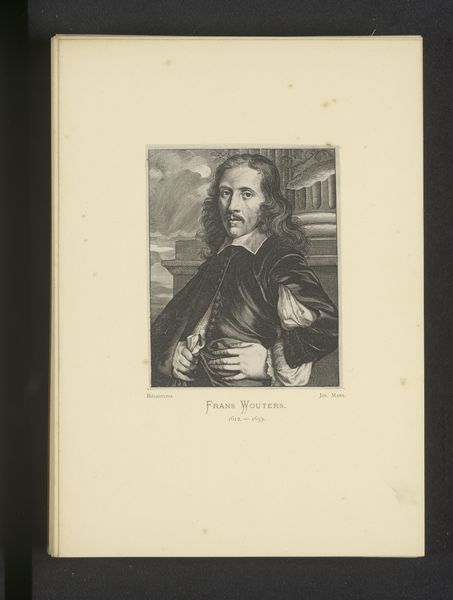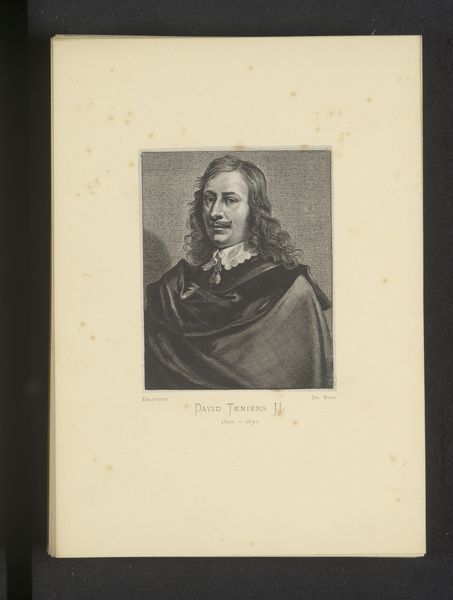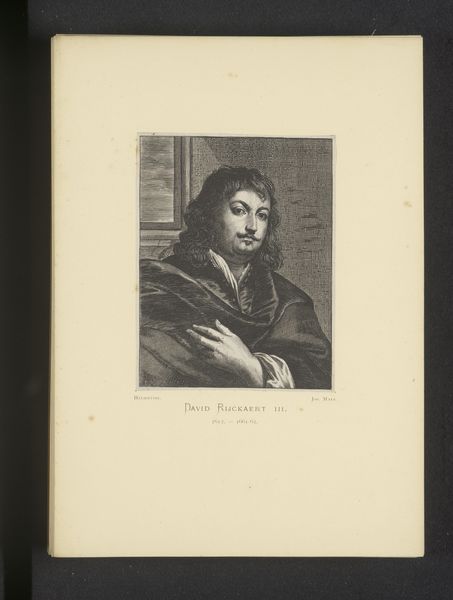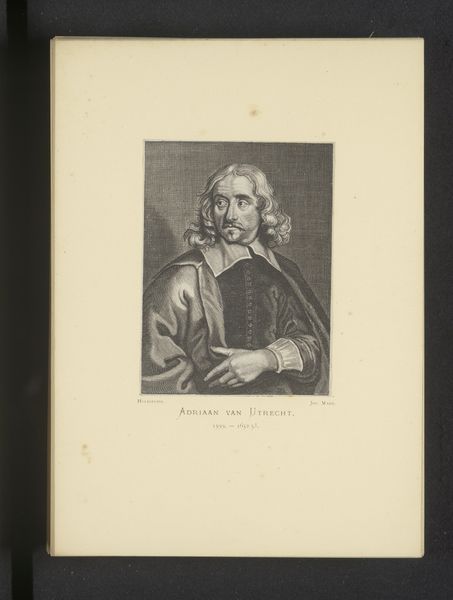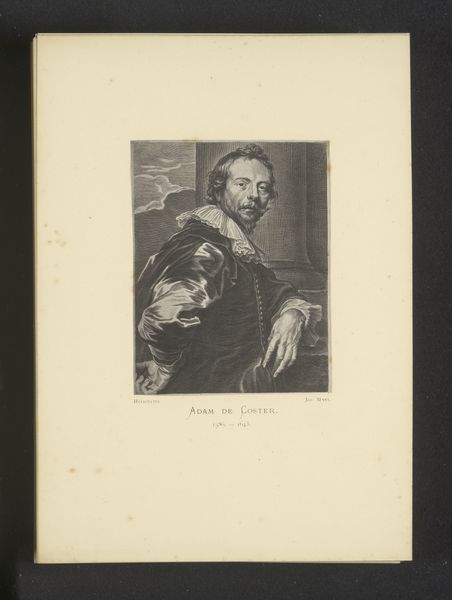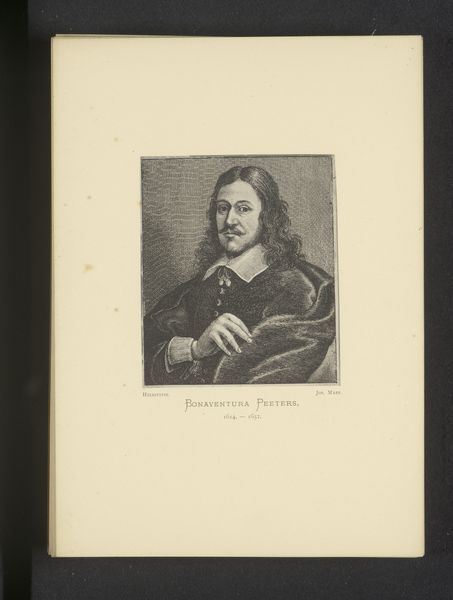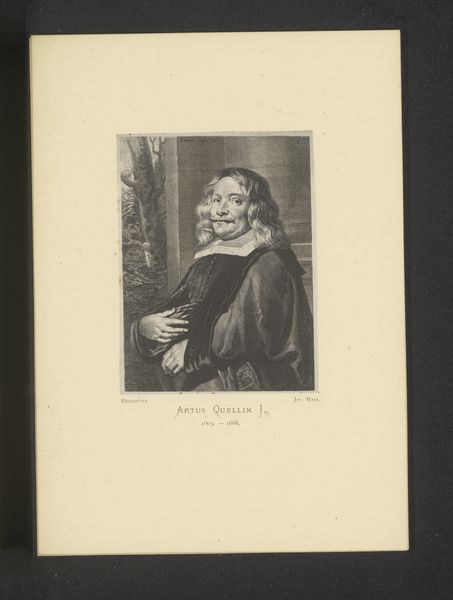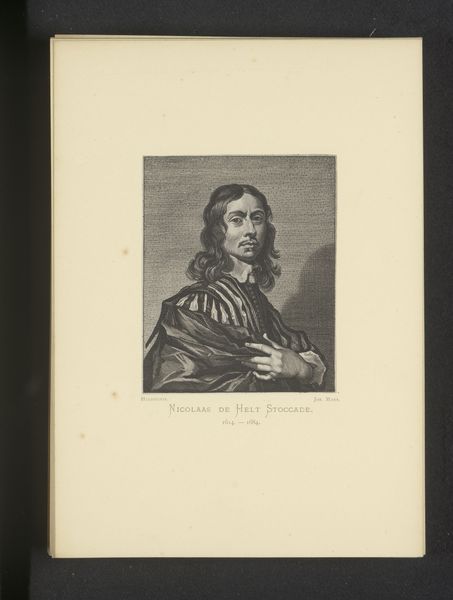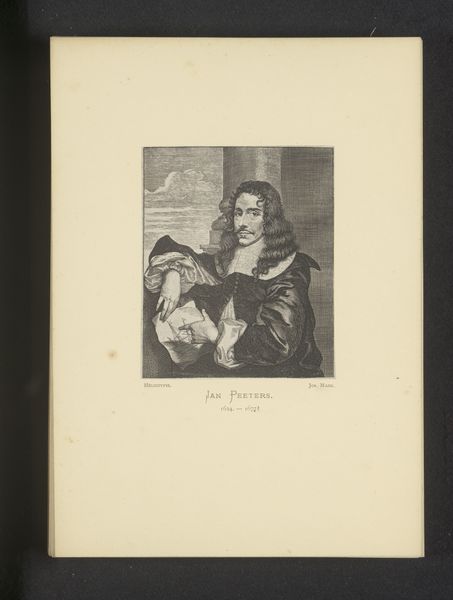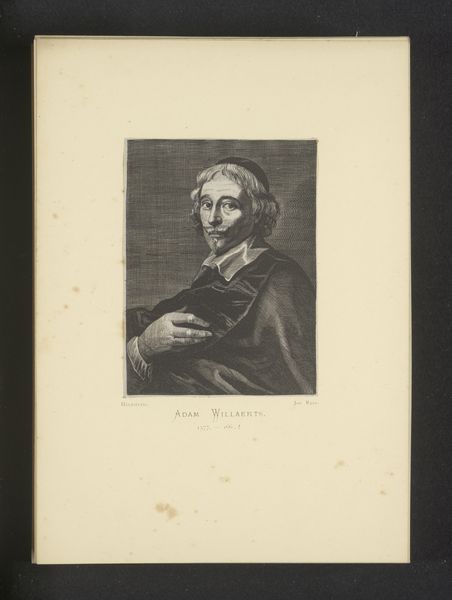
Reproductie van een gravure van een portret van Erasmus Quellinus door Pieter de Jode (II) before 1877
0:00
0:00
Dimensions: height 114 mm, width 92 mm
Copyright: Rijks Museum: Open Domain
Curator: Welcome. We’re observing a reproduction of an engraved portrait by Pieter de Jode II, depicting Erasmus Quellinus. Its date is estimated to be before 1877. Editor: He looks...haunted. Not in a traditionally spooky way, but burdened, somehow. Is it just me, or do you feel like this guy has seen something, or *done* something, he’s not quite come to terms with? Curator: The engraving is a masterful study in light and shadow, note the density of cross-hatching employed to model the contours of Quellinus’ face, lending a sense of gravity appropriate for a Baroque portrait. Observe how the play of light articulates his gaze. Editor: Absolutely, you’re right about the gaze. It’s piercing, even slightly unnerving. And it works so well because of the texture; the engraving creates almost a palpable weight, both literally in terms of the density of the marks, and figuratively in suggesting a heavy heart. Do you think that weight contributes to its success? Curator: The technique serves more than simply the emotional impact; the textural depth achieved via engraving allows the artwork to retain fidelity across multiple reproductions, a functional necessity for circulating portraiture of the time. This, of course, ensured wider distribution. Editor: I suppose you are right. And that gets you thinking...how many people, then, would have stared back into that melancholic gaze over the years? It's like a silent dialogue happening across centuries, filtered through ink and paper. Curator: Exactly. As such, we are not just seeing a face. This reproduction is an artifact embedded within circuits of dissemination and the perpetuation of influence, echoing ideas of baroque classicism. Editor: To look at it with fresh eyes feels, in its way, revolutionary; it has returned again through its line and form. Thanks for giving me new frameworks. Curator: And thank you, it is good to share observations.
Comments
No comments
Be the first to comment and join the conversation on the ultimate creative platform.
